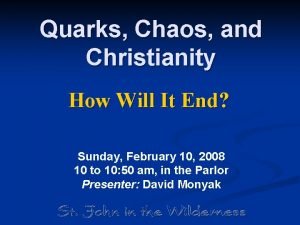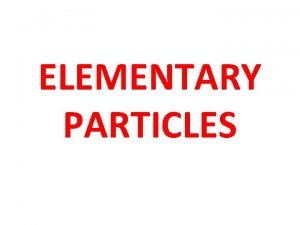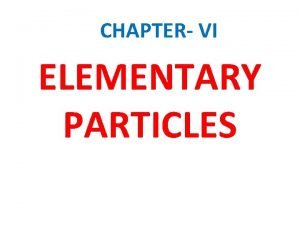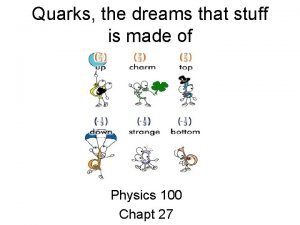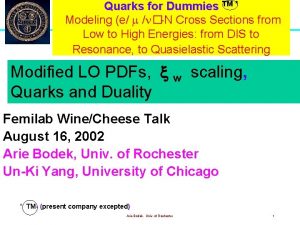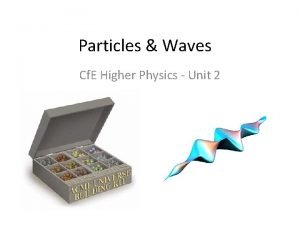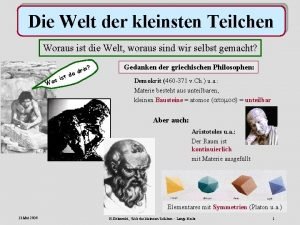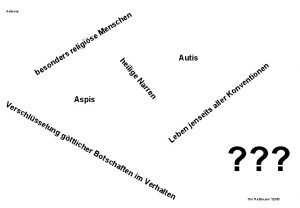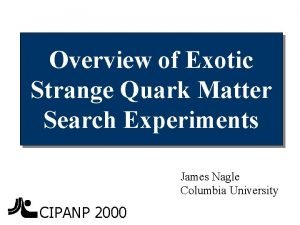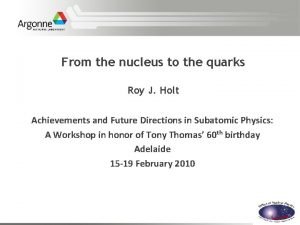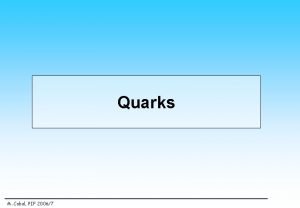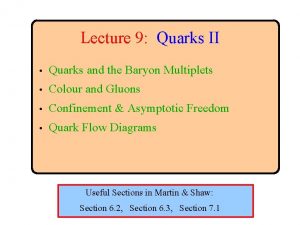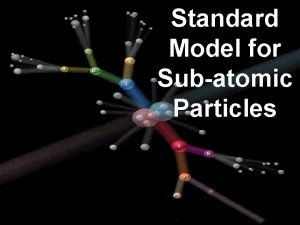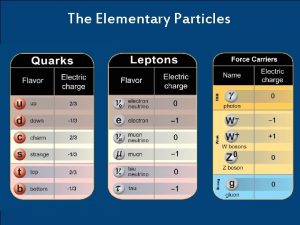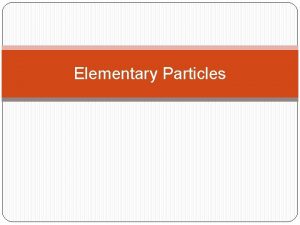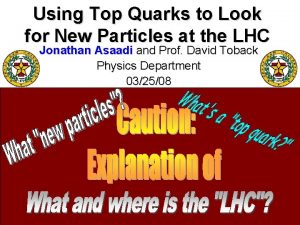Lecture 29 Elementary Particles and Quarks Chapter 30










- Slides: 10

Lecture 29 Elementary Particles and Quarks Chapter 30. 4 30. 12 Outline • Fundamental Forces • Elementary particles • Quarks

Fine Structure of Matter Ancient Greeks suggested that matter consists of tiny particles called atoms. Only in the 20 -th century building blocks of atoms were discovered. The main blocks (protons, electrons, and neutrons) are stable at least within the atomic nucleus. Free neutrons decay within minutes. Protons have half-life of 1031 years.

Elementary Particles It was found by 1930 s that kinetic energies of electrons in decay reactions are lower than predicted. Pauli (1930) and Fermi proposed a new, electrically neutral, particle to account for the missing energy. It was discovered in 1956 and called neutrino. In 1960 s, many other subatomic particles were discovered experimentally. Most of them turned out to be short-lived.

Elementary particles Almost each elementary particle has an antiparticle, that has the same mass, but the electric charge of an opposite sign (e and e+, electron and positron). When a particle and its antiparticle come together, they destroy each other (annihilation). The lost mass reappears as energy in the form of rays.

Fundamental Interactions Elementary particles interact with each other in 4 ways. The strong interaction: • holds protons and neutrons together • acts over sizes of ~10 15 cm • does not affect electrons The electromagnetic interaction: • gives rise to electric and magnetic forces • responsible for the structure of matter • 100 times weaker than the strong interaction • is unlimited in range and acts on electrons

Fundamental Interactions The weak interaction: • affects all particles and helps to determine the compositions of atomic nuclei (beta-decay) • acts over a shorter range than the strong interaction and 10 trillion times weaker The gravitational interaction: • responsible for the attractive force one mass exerts on another • dominates on a large scale • the weakest on the smallest scales

Leptons and Hadrons All elementary particles fall into 2 broad categories with respect to their response to the strong interaction. Leptons (light) are not affected and seem to be point particles with no internal structure (electron). Hadrons (heavy) are affected by the strong interaction, have definite sizes (~10 15 cm), and have structure (proton and neutron).

Quarks are particles which make up hadrons. Only 6 kinds of quarks are needed to account for all hadrons. The proton, neutron, and heavier hadrons consist of 3 quarks. Quarks have fractional electric charges 1/3 e and 2/3 e. They do not seem to exist outside hadrons. All the evidence for quarks is indirect, but theory correctly predicts new hadrons.

Quarks

Summary Matter has finer structure than atoms and the three main subatomic particles. There are only 4 fundamentally different forces in nature (strong, electromagnetic, weak, and gravity).
